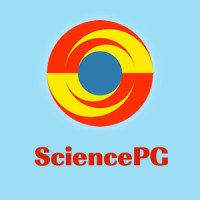Publications by Science Publishing Group
31 Publications found
Heart Rate Variability: A Longitudinal Comparison of Commercial Devices for Individual and Group Stress-Response
Authors: Kaela Hierholzer , Robert Briggs , Michael Tolston , Nicholas Mackowski , Jason Eckerle , Maegan O’Connor , Kristyn Barrett , Roger Smith , Adam Strang
In Life Sciences, Psychology, Biology
The collection of heart rate variability (HRV) for health and performance observations have become prominent. However, each wearable device has proprietary algorithms that govern methods and timing of HRV capture and subsequent analysis. The purpose of this study was to evaluate HRV metrics taken from three, commonly used commercial wearables, and identify reliability and relationships to one another over time. Methods: Twenty-five subjects (18 males; 7 females) with ages ranging from 23 to 41 years (32.70 ± 4.65 years) were included in this study. These subjects were participants in a 12-week exercise intervention study. Each subject was equipped with a Whoop Strap (v2.0), the Garmin Fenix 5 Smartwatch and chest strap, and the Omegawave chest strap and sensor. Statistical Analysis: Between and within-subject correlations were calculated as well as average correlations, descriptive and inferential statistics, and the resultant z-score, which was transformed back into a correlation. Intraclass correlation coefficients (ICC) were calculated. Finally, linear mixed models were used to evaluate trends in HRV. Results: Within-subject correlations (0.24 ± 0.27) were lower than between-subjects correlations (0.54 ± 0.43), t (35) = -4.02, p < 0.001. Garmin HRV Stress, Whoop RMSSD, Omegawave SDNN, and Omegawave RMSSD yielded an ICC between 0.65 and 0.75. Garmin All-day stress, Garmin prior all-day stress, and Omegawave LF/HF yielded an ICC of 0.30 and 0.37. To test the effects of day of the week on HRV, we fitted linear mixed models to HRV metrics from three of the identified communities related to ICC: Omegawave RMSSD (moderate to high ICC), Omegawave LF/HF (low to moderate ICC), and Whoop recovery score (very low ICC). There was a main effect of gender on Omegawave RMSSD (p = 0.020) and a negative effect of day of the week (p = 0.030). Day of the week was the only significant predictor of Whoop recovery score (p < 0.001). Conclusion: The correlations of HRV values remain more consistent when assessed at similar times of the day, rather than being device dependent. Regardless of which wearable device is considered, HRV measures should be collected at a specific time each day for the best reliability. When creating an individualized or group exercise program, the human performance specialist should be aware that fatigue may become increasingly evident during the course of each week (e.g. individuals demonstrably fatigued by Friday may exhibit physiological indicators of relative recovery by Monday).

Quantitative Production of High Concentration Poly-Ferric Magnesium Sulfate Coagulant Through Ferrous Sulfate Oxidation
Authors: Rufu Wang , Ping Wu , Yong Liu , Rong Wang
Poly-ferric magnesium sulfate coagulant as another water purifying agent besides poly-aluminum multi-salt can be quantitatively produced through ferrous sulfate oxidation with high product concentration. This article starts with the selection of raw material, then elaborates process flow from a small-scale lab simulate experiment to a large-scale production of this high concentration water purifying agent. According to the corporate technical standard of this product, chemical compositions of the primary material (ferrous sulfate heptahydrate) and auxiliary materials (alkalizing agent, oxidizer, etc.), and the alkalinity of the product (B=8%), this article provides calculation of the raw materials’ input and output for producing 1 ton of the product liquid. The reaction is carried out step-by-step in a heating reactor equipped with acidic mist re-flux tower and filtration devices. The first step: ferrous sulfate oxidation by sodium chlorate; the second step: polymerization, precipitation, and filtration separation; the third step: arsenic and heavy metal check and precipitate separation by flocculating precipitant and metal chelating precipitant; last, use the laboratory test results to back calculating alkalinity (B%), coagulation strength (C%), and molecular formula of the final product liquid. This article not only rationalizes the feasibility with chemical/physical mechanisms this technique, formulation, production method, but also guides through the back calculation to provide data of the properties as a documentation of the certificate of analysis for the product.

Responsible Entrepreneurship for Environmental Sustainability and Human Wellbeing: A Missiological Perspective
Authors: Chrispin Dambula
Entrepreneurship is a lucrative occupation that offers its pursuers promises of wealth. However, as much as entrepreneurship is rewarding, it can bear undesirable consequences if it is not guided by a sense of responsibleness to consider seriously sustainability of the earth and flourishing of all humanity. Surely, entrepreneurship which only focuses on profit optimization can contribute to environmental pollution and income and wealth disparity. The earth is experiencing rising temperatures partly due to some entrepreneurial activities as individuals and nations seek to create wealth. Furthermore, the world is experiencing increased human suffering partly due to exploitation by business owners who prioritize personal gain at the expense of their employees. This paper critically reviews relevant literature to highlight the dark side of entrepreneurship and to appeal for responsibleness among entrepreneurs based off missiological perspective on the purpose of humans on earth. The paper points to missiology as a potential academic field that can encourage a sense of responsibleness in entrepreneurial endeavors to enrich scholarship. The main contribution of this paper is that a missiological understanding of the origins and the purpose for which humans exist on earth could help to foster responsible entrepreneurship that could promote environmental sustainability and flourishing of all humanity. By doing so, this paper also appeals to missiologists to engage entrepreneurship seriously in their scholarly work.

Optimization of a High Capacity Industrial Bar Press for Jatropha Curcas Oil Extraction
Authors: Moussa Abdoul-Aziz , Sidibe Sadio Sayon , Ouedraogo Abdoulaye , Ouedraogo Emmanuel , Ousmane Moctar , Coulibaly Ousmane
In Social and Behavioral Sciences, Psychology
This study allowed us to achieve the optimal yield for the extraction of Jatropha Curcas oil from the main operating variables of an industrial press. We used an industrial bar press with a large extraction capacity to carry out this work. Two interesting and indicative parameters on the influence of the efficiency of the press have been analyzed, namely the number of steps of screw and the no-load temperature on the efficiency, the temperatures of the screw, oil and cake, the flow rate of the press, the power, the specific mechanical energy of the press. The best result of 31.09%, which corresponds to the maximum recovery rate of 76.92%, was obtained with the highest number of steps of screw and the highest no-load temperature. The influence of the no-load temperature of the screw on the stability of the press has also been highlighted. The screw, the oil and the cake temperatures stabilize when the no-load temperature is greater than or equal to 100°C. The study of operating variables shows their role on the specific mechanical energy. Indeed, the increase in the number of steps of screw from 4 to 6 results in a decrease in seed flow and increase in power leading to an increase in the specific mechanical energy from 34.01 to 49.83 Wh/kg.

Doctoral Virtual Supervisory Meeting: Engagement Optimization Strategies
Authors: Patrick Oduor Owoche , Joshua Olang’o Abuya , Paul Obino Ong’anyi
In Education
The emergence of COVID-19 has seen widespread adoption and use of virtual interaction in business, academic, and other areas where hitherto their use was not imaginable just a few years ago. The adoption of virtual interactions has also seen growth in a number of service providers as well as enhancement of the quality of interactions. However, this advancement in virtual technologies does not guarantee their optimal use. This qualitative study’s main purpose was to explore discursive practices that impact virtual meeting experiences as they take place during the course of the doctoral supervisory process in Kenyan universities. The study used media richness theory and channel expansion theory to analyze the affordances of computer-mediated communication presented to the user to conduct virtual meetings. Drawing upon survey and interview transcripts, it was found that the choice of virtual meeting channel was based on the availability of technology and past experience enhanced the perception of the effectiveness of virtual meetings. This study proposes strategies for enhancing the virtual supervisory process based on the media richness theory, channel expansion theory, and research data. The strategy addresses the aspects of management of risks, virtual meeting etiquettes, supervisory relationship, and confidentiality as well as after the meeting follow-up. The proposed strategies will enhance academic interaction and can be used in similar interactions in other fields.

Plant Responses on Elective Gels for in vitro Shoot Multiplication and Root Elongation of Pineapple (Ananas comosus L.)
Authors: Berihu Mengs Gebrehiwet
In Engineering
The quest for alternative matrices for plant tissue culture is a continuing process. Agar is one of the utmost common coagulating agents in plant in vitro clonal propagation. Pure grade agar has high value price and fear of over manipulation of its resources affected searching for low cost options. Therefore, liquid medium supplement with silica gel, glass beads and sands substratum and agar in two steps of micro propagation (seedling proliferation and root induction) were investigated. The shoot multiplication in the cytokinins hormone of 2.5mg/l BA and 0.5mg/l KN supported by 7g/l agar and alternative matrices has been produced 33.1 shoots and 5.3 shoot length in sands and agar. There is none significant difference among shoot number and shoot length on the agar and sands on shoot multiplication and plant, and there is significant difference in glass beads and silica gel compared with sand/agar in the shoot multiplication, and there is highly significance in shoot length in the matrices of plant support. Pineapple root induced in auxins hormone in vitro culture of plant propagation in half strength MS media, 30g/l sugar, 1mg/l NAA and 7g/l agar. The higher root number in sands 10.6 and followed 10 in silica gel and agar supported matrices. The root length also none significant difference among means treatments in agar, glass beads and sands. However, there is a significance difference with silica gel in root length. These silica gel, glass beads and sands used as agar gels to support and aeration plantlets.

Effect of Date Palm Seed Pod Ash and Eggshell Powder on the Physico-Mechanical Properties of Cement Blends
Authors: Iliya Bila Auta , Ibrahim Ikara Abdulkarim , Olubajo Olumide Olu
In Life Sciences, Biology
The aim of this research was to investigate the effect of replacing eggshell powder (ESP) with date palm seed pod ash (DPSA), curing age and cement replacement on the properties of cement blended with ESP and/or DPSA on the water consistence, setting times and mortar compressive strengths according to ASTM standards. DPSA was produced by calcining date palm seed pod at 590°C for 8 hours followed by 630°C for 3 hours and the resultant ash was ground and sieve with a 90-micron sieve. Portland limestone cement CEM II 42.5R was employed and replaced by eggshell powder and DPSA at various proportions between 0 – 12.5 wt.% at interval of 2.5 wt.% for consistence and setting times whereas cement replacement was varied between 0 -8 wt.% at interval of 2 wt.% for the mortar compressive strength by using 50 mm cubes with a mixing ratio 1:3:5 (water, binder and sand). DPSA revealed high silica content of 42.75 wt.% with SiO2+Al2O3+Fe2O3 < 70% (45.38 wt.%) and hence may not be considered as a good pozzolana whereas ESP revealed a high lime content of 55.45 wt.% and considered a filler respectively using X-ray fluorescence spectrometer. Results indicated an increase in the water consistence for DPSA cement blend in comparison with control which related to either presence of unburnt carbon, clinker diminution or formation of magnesium hydroxide as a protective layer. Most of the cement blends experienced a diminution in the setting time compared to control except for cement blended with higher DPSA content. The accelerated and retarded setting times could possibly be due to available lime which favors ettringite instead of monosulfate and unburnt carbon present resulting in high water demand. The compressive strengths of both the control and cement experienced increments as curing age progressed with most of the blends exhibiting enhanced strength especially at the later stage at 28 and 60 days in comparison with control PLC. The reason for the enhanced strength at the later stage despite clinker diminution could be attributed to pozzolanic reaction between silica present in DPSA coupled with the available lime present in ESP. The optimal cement replacement of 4 wt.% was observed beyond which cement blends produced slightly lower strength in comparison with control owing to clinker diminution effect and higher water demand due to unburnt carbon present.

Physical Activity, Physical Function and Neighborhood Environment Adaptation Among Older Adults Dwelling in Asaba, Delta State, Nigeria
Authors: Ogbutor Udoji Godsday , Olisa Chisom Kingsley , Ephraim Chukwuemeka , Kizito Bright , Ezunu Emmanuel , Nworah Awele Maria , Nwangwa Eze Kingsley
In Life Sciences, Biology
Background: Consequent upon the increasing pressure on health system created by growing population of older adults, attention has been channeled to ways to smoothen the aging process among older adults including studying on their physical activity (PA), physical function (PF) and neighborhood environment adaptation (NEA). This study aimed to determine the level and interrelationships between PA, PF and NEA among older adults dwelling in Asaba, Delta State, Nigeria. Methodology: This is a cross sectional study involving 150 older adults (56% females; mean age = 72.57±6.32 years) consecutively recruited from communities in Asaba, Delta State, Nigeria. The International Physical Activity Questionnaire, the Physical Function Activity Scale (SF-36) and Physical Activity Neighborhood Environment scale in Nigeria (PANES-N) were used to assess physical activity, physical function and neighborhood environment adaptation among the participants respectively. Data was analyzed using frequency counts, percentages, mean, standard deviation and spearman’s correlation test at alpha level of 0.05. Results: The mean total of PA, PF, and NEA scores were 1324±1124.35MET-min/week (adequate), 60.58±17.44 (dependent), 2.32±0.27 (moderate) respectively. PF had direct correlation with PA (rho=0.69; p=

Productivity and Progesterone Profile of Nulliparous and Second-Parous Rabbits Characterized by Low and High Litter Size
Authors: Mohamed Abdel-Fatah Abo-Farw , Wael Mohamed Nagy , Sherief Mohamed Zayed , George Ezaat Younan , Rehab Fawzy Ismail
In Life Sciences, Biology
This study aimed to evaluate the effect of the litter size (LS) category on the reproductive performance of nulliparous (NP) and second-parous (SP) NZW rabbits and the performance of their offspring. A total of 39 NP and 33 SP doe rabbits were divided into low (LLS, <7) and high (HLS, ≥7) after parturition. Reproductive measurements of each LS category and doe type were determined. The results show LS of 3-8 and 4-10 NP and SP, respectively. Doe rabbits with 6 LS show the highest distribution. Doe body weight at mating and from mating to parturition was higher (P<0.0001) for HLS than LLS, and SP than NP. Kit weight at birth and weaning, LS and viability were higher in HLS than in LLS does. At weaning, LS was higher (P<0.0001) in SP than NP. Levels of P4 at mid-pregnancy (P<0.001) were higher in HLS than in LLS, and in SP than in NP. In conclusion, a high litter size category (≥7/doe) was obtained from heavier NP or SP doe rabbits (LBW around 3 kg) and from second-parous compared with nulliparous does, with near similarity in conception rate of does. Weight and viability rate at birth and weaning as well as plasma progesterone level at mid-pregnancy were higher for does with high than low litter size category. In conclusion, body weight and parity may have a significant role in improving the litter size of doe rabbits, which may be useful in breeding and managerial programs to increase the economic value of rabbit production.

